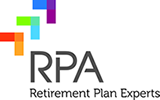In January 2016, the IRS issued Notice 2016-16 providing long-awaited guidance on when changes can be made to safe harbor 401(k) plans mid-year. Previous IRS guidance (formal and informal) seemed to indicate there were only limited circumstances under which a safe harbor plan could be amended prior to the first day of the following plan year. Thankfully, this notice reflects an apparent shift in the IRS’s position and provides sponsors of safe harbor 401(k) plans with much greater flexibility throughout the year. The notice does contain a short list of changes that are specifically prohibited, but many changes are permissible provided certain conditions are satisfied.
Which changes are permissible?
In general, most changes that would be permissible mid-year in a traditional 401(k) plan can now also be made in a safe harbor plan as long as the necessary requirements are met.
What are the requirements for amending a safe harbor plan mid-year?
If a permissible amendment results in a change to the information provided in the safe harbor notice, then an updated notice must be provided within a reasonable period prior to the effective date of the change. For this purpose, the IRS considers the timing requirement to be satisfied if the updated notice is provided at least 30 (but no more than 90) days prior to the change.
In situations where it is not practical to provide the notice prior to effective date of the change (ex. the plan is being amended retroactively as the first day of the plan year to provide for an additional match), then the updated safe harbor notice must be provided as soon as possible but no later than 30 days after the date the amendment is adopted.
In either case, participants must also be provided the opportunity to change their deferral elections for a reasonable period of time following receipt of the updated safe harbor notice.
What if the change doesn’t impact the information provided in the safe harbor notice?
If the change doesn’t impact the information required to be provided in the safe harbor notice (under the regulations), then there is no requirement to provide an updated notice (even if the original notice included such information) or to provide participants with an opportunity to make changes to their deferral elections.
Keep in mind, however, the plan would generally be required to provide participants with either a Summary of Material Modifications or an updated Summary Plan Description.
Which changes are specifically prohibited?
- Any change that would reduce the number of participants who are currently eligible to receive safe harbor contributions
- Changing the type of safe harbor plan (ex. changing from a traditional safe harbor plan to a qualified automatic contribution arrangement)
- Increasing the number of years required to become vested in safe harbor contributions under a qualified automatic contribution arrangement
- A mid-year change to add or modify the formula used to calculate matching contributions (or related plan compensation) or a mid-year change to permit discretionary matching contributions, unless certain additional conditions are satisfied
What are the conditions for making changes to matching contributions?
In order to increase safe harbor matching contributions (or to add or modify a fixed or discretionary matching contribution), the amendment must be adopted at least 3 months prior to the plan year, must be retroactive as of the first day of the plan year, and the necessary notice and deferral opportunity requirements must be met.
Did the IRS provide any example of permissible amendments?
Yes. IRS Notice 2016-16 provides a number of examples of permissible amendments including the following:
- An amendment to increase the safe harbor nonelective contribution from 3% to 4% for future contributions
- An amendment made prior to 3 months before the end of the plan year to increase the safe harbor matching contribution from 4% to 5% and to change the period for calculating match from a payroll period to plan year basis retroactively
- An amendment to add an age 59 ½ in-service distribution feature
Can a plan be amended to reduce or suspend safe harbor contributions mid-year?
It depends; this is actually addressed under the safe harbor regulations and was not impacted by IRS Notice 2016-16. A safe harbor plan may only be amended mid-year to reduce or suspend safe harbor contributions if (1) the employer is operating at an “economic loss”, or (2) the annual safe harbor notice included a statement indicating that the plan could be amended to remove or suspend safe harbor contributions during the plan year. Additional procedural requirements must also be satisfied.
Can a safe harbor plan be terminated mid-year?
Yes; this is also addressed under the regulations. In general, safe harbor contributions must be made through the date the plan is terminated, and other conditions must be satisfied. Unless the plan termination is due to a substantial business hardship (as defined under IRC §412(c)), or as a result of a company merger or acquisition transaction, the plan would lose its safe harbor status for the final plan year (i.e. the plan would be subject to ADP/ACP testing, top heavy requirements, etc.)
How can I learn more?
If you are considering making a change to your safe harbor 401(k) plan mid-year or would just like to learn more, please contact us and we will be happy to assist you.

